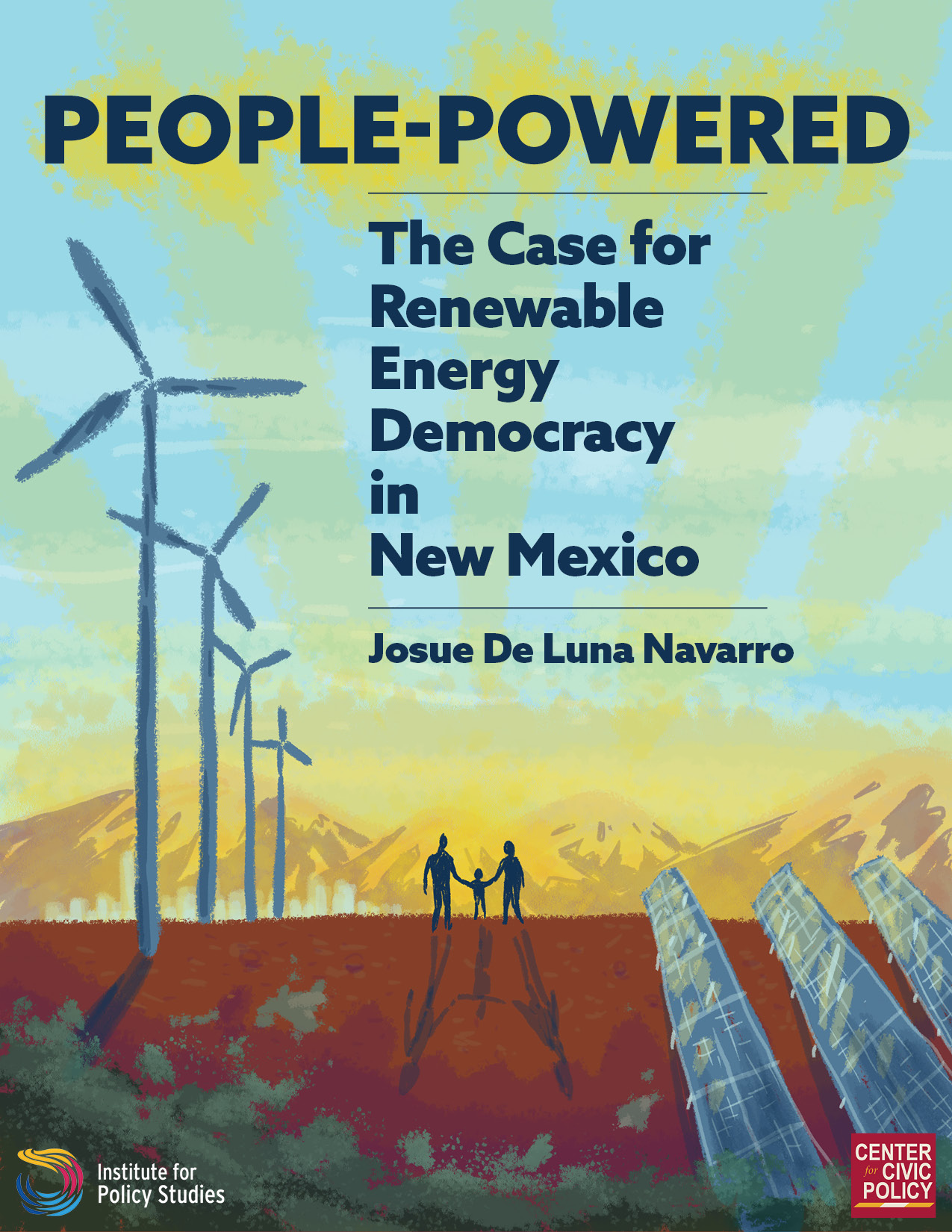People-Powered: The Case for Renewable Energy Democracy in New Mexico
Josue De Luna Navarro
Introduction
Climate change has made decarbonizing our economy a priority. While the federal government has been slow to enact standards to this effect, many states are taking matters into their own hands.
By passing the Energy Transition Act in 2019, New Mexico joined a growing number of states to enact legislation requiring 100 percent renewable energy for its electric grid by 2050 or earlier. This is a tremendous opportunity to build wealth, equity, and energy democracy in the state.
However, the transition is also opening doors to outside corporations to profit off the resources of New Mexicans. Regardless of the economic development and job creation private companies can bring, this system is designed so that shareholders of companies win. It excludes New Mexicans from a new opportunity to generate wealth.
This report illustrates the costs of transitioning to clean energy without a clear plan for energy democracy — and then lays out a plan for how to get there.

Key Findings
- New Mexicans are standing on a gold mine of solar and wind energy. But unfortunately, the state is selling its potential to outside corporations.
- New Mexico is letting $207 million leave the state by not creating a legal and financial pathway for public and community-owned clean energy infrastructure.
- Alongside these lost revenues, New Mexico is currently providing $165 million worth of tax credits to an already well-established clean energy industry.
- If New Mexico had built its existing wind and solar generation capacity under public ownership, it could have generated an additional $7.7 billion in economic benefits and 61,680 additional jobs.
- Public ownership would also transform access to energy from a for-profit service to a basic human right for all New Mexicans.
Policy Recommendations
Short-term policies that would build a pathway to a publicly owned grid:
Passing a Community Solar Act
A Community Solar Act would create a legal pathway for non-profits, municipalities, and community organizations to create community solar farms. A community solar farm is a solar generating facility collectively owned by members of the community it serves.
This would allow community members who cannot install rooftop solar panels to get net metering credits on their utility bills while at the same time generating more renewable energy, local jobs, and economic development.
It should also require state agencies, local governments, and utilities to agree to buy the energy from community solar farms — and create pathways for communities to obtain funding and financing to start their own community solar farms.
Creating a New Mexico Community Ownership of Power Administration (COPA)
This program would help communities transition to a new energy system based on local, community benefit. It would provide legal, technical, and other assistance for communities to take over the ownership of utilities — and create mechanisms for new community-owned utilities and existing rural electric coops to access finance to invest in their infrastructure.
Passing the Local Energy Choice Act
This would allow a local community to pool its electricity demand and create a local utility, which would choose where to buy electricity from (either by setting up its own power generation facilities or buying electricity from generation facilities of their choice). These local utilities would be able to work with distribution line owners (such as the Investor-Owned Utility) in the service area to transmit and distribute that electricity to homes and businesses.
A Local Energy Choice Act would make it legal for communities and Tribal Nations to create utilities and decide where their energy comes from, while also controlling energy costs and keeping energy dollars circulating in local economies.
Long-term policies to ensure New Mexicans control the future of their state’s energy resources:
Setting up a Public Bank
New Mexico must create a public bank to provide financial pathways to communities for the development of publicly owned clean energy. A public bank would make it possible for publicly owned utilities to access low-cost capital to invest in their grid infrastructure, freeing them from having to depend on big banks.
Setting up an Office of Energy Democracy
The transition from a mostly Investor-Owned Utility model to a public ownership model requires the input of frontline communities. Creating an office of energy democracy would not only create a structure for community input in the process, but would also create a foundation for a state agency to oversee a statewide publicly owned energy infrastructure.
Passing the New Mexico Public Utility Holding Company Act
This bill would force the breakup and restructuring of corporate electricity monopolies, including taking back all corporate power generation assets and transmission and distribution lines throughout the state.
By opting for public ownership of energy, New Mexico can lower energy costs and reinvest in energy efficiency for poorer communities. This would decrease the energy burden experienced by households in the state.
New Mexico must act boldly and commit to a future in which we collectively own and benefit from the generation and distribution of electricity — instead of depending on for-profit corporations for this essential service.
